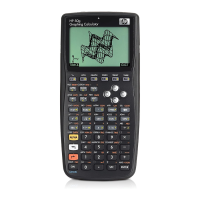Page 16-43
The amplitudes A
n
will be referred to as the spectrum of the function and will be
a measure of the magnitude of the component of f(x) with frequency f
n
= n/T.
The basic or fundamental frequency in the Fourier series is f
0
= 1/T, thus, all
other frequencies are multiples of this basic frequency, i.e., f
n
= n⋅f
0
. Also, we
can define an angular frequency, ω
n
= 2nπ/T = 2π⋅f
n
= 2π⋅ n⋅f
0
= n⋅ω
0
, where
ω
0
is the basic or fundamental angular frequency of the Fourier series.
Using the angular frequency notation, the Fourier series expansion is written as
A plot of the values A
n
vs. ω
n
is the typical representation of a discrete
spectrum for a function. The discrete spectrum will show that the function has
components at angular frequencies ω
n
which are integer multiples of the
fundamental angular frequency ω
0
.
Suppose that we are faced with the need to expand a non-periodic function into
sine and cosine components. A non-periodic function can be thought of as
having an infinitely large period. Thus, for a very large value of T, the
fundamental angular frequency, ω
0
= 2π/T, becomes a very small quantity, say
Δω. Also, the angular frequencies corresponding to ω
n
= n⋅ω
0
= n⋅Δω, (n = 1,
2, …, ∞), now take values closer and closer to each other, suggesting the need
for a continuous spectrum of values.
The non-periodic function can be written, therefore, as
where
∑
∞
=
+⋅+=
1
0
).cos()(
n
nnn
xAaxf
φω
()
∑
∞
=
⋅+⋅+=
1
0
sincos
n
nnnn
xbxaa
ωω
∫
∞
⋅⋅+⋅⋅=
0
,)]sin()()cos()([)(
ωωωωω
dxSxCxf
∫
∞
−∞
⋅⋅⋅⋅= ,)cos()(
2
1
)( dxxxfC
ω
π
ω

